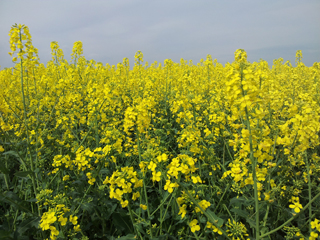 What a contrast in the weather this year compared to this time last year We have had a very mild winter with warm weather most of the time, whereas this time last year a lot of the country was covered in snow and the weather was bitterly cold – and wet when not snowy. This warmth means the bees have been eating more food than is usual during the winter months and the queen has started laying a lot earlier.
What a contrast in the weather this year compared to this time last year We have had a very mild winter with warm weather most of the time, whereas this time last year a lot of the country was covered in snow and the weather was bitterly cold – and wet when not snowy. This warmth means the bees have been eating more food than is usual during the winter months and the queen has started laying a lot earlier.
However, it has also meant that I have not lost any colonies as a result of the winter weather, so it’s a good omen for the year ahead. The fondant I have fed the bees has all been eaten and I have replaced it with a dilute sugar solution that they can assimilate immediately, which also convinces the queen that there is a nectar flow on and she had better get a move on laying eggs if she hasn’t started in earnest already!
Looking through the perspex crown boards on top of the brood boxes in the hives, I can see several colonies of my bees are already really strong and ready to go once the weather improves further. It could mean that we might get a Spring harvest this year – but chickens and bees! Don’t weigh your honey before it’s harvested!
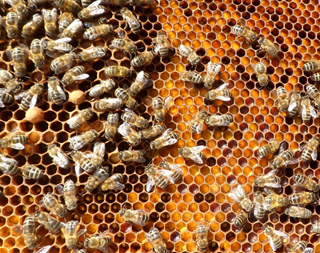
I have already taken one colony to the rape fields up at Trewartha and another will follow shortly – the rape should be in full flower in the next couple of weeks and the bees love its nectar and collect it abundantly. Whether I get a honey crop or it is just used by the bees to build up their colonies, I don’t mind. Either way will be good for them – and for me! I already have two colonies ready for the rape in Tregony, so between them all there should be at least four strong colonies going into the summer season – if they don’t swarm first!
The problem with rape is that, because of its abundant nectar, the brood nest fills up very quickly, as the forager bees on returning to the hive just want to dump their payload in the nearest cells to the entrance. This results in the bees thinking the queen has not got enough room to lay up a large colony, so they decide to swarm in the hope of finding somewhere bigger. As long as I keep an eye on that then there should be no problem – but I’ll let you know!
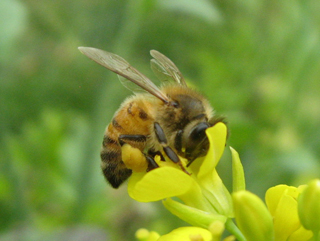
I also have two colonies in a wild flower meadow, with a third to follow shortly. It will be interesting to see if the honey actually tastes different from the hives there compared with what I get at home – it should, but again time will tell.
So where are all these colonies coming from? Well, my home apiaries had been building up slowly in numbers, to the point where there are theoretically too many colonies in the foraging area that is available to them. An eminent entomologist has shown that any more than seven hives in an apiary can lead to each one having less available forage to bring home, and this can result not only in reduced honey harvests but can also exacerbate disease problems.
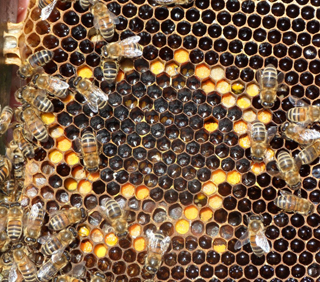
Since I had seventeen in one apiary at home, together with another three in a second home apiary, I thought this was pushing things a little, so have decided to experiment and, though disease has never been an issue with my bees luckily, see if my honey crops increase by spreading the hives across a greater area, instead of concentrating them in one location. Not that honey is my prime objective in keeping bees – I can only sell or give away a certain amount of honey and then I’m left with what might be called “an embarrassment of honey” – in my dreams!!
My purpose in keeping bees has always been for the environmental benefits and this is still the case today, the honey being an “extra”. Pollination services provided by the bees is worth over £200M to the UK agricultural economy, whereas the honey is only valued at about £110,000. You can see why the American commercial beekeepers chase pollination contracts so avidly with those kinds of returns.
Unfortunately, because the bees then become “commodities” in such a scenario, they are suffering as a result, and they end up with all manner of diseases brought on by stress. Luckily, because of our size as an island nation and because of our short beekeeping season, this is never likely to be a problem we will face in the UK. However, forewarned is forearmed.
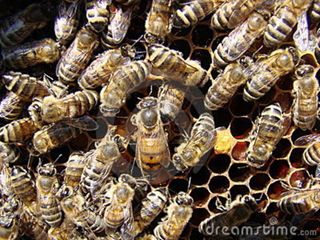 Finally, education. There is a big push across the beekeeping community at the moment to increase beekeepers’ standards of husbandry to ensure our bees are well-managed and increase in numbers, thereby avoiding any possibility of the honeybee becoming an endangered species. Also, we are endeavouring to take the message out to the wider public in as many spheres as possible to broaden the public’s understanding of how important this, supposedly insignificant, insect actually is.
Finally, education. There is a big push across the beekeeping community at the moment to increase beekeepers’ standards of husbandry to ensure our bees are well-managed and increase in numbers, thereby avoiding any possibility of the honeybee becoming an endangered species. Also, we are endeavouring to take the message out to the wider public in as many spheres as possible to broaden the public’s understanding of how important this, supposedly insignificant, insect actually is.
The Roseland Beekeeping Group has therefore developed its web-site to include information which enables groups who are interested to know more about honeybees to make contact with those of us who are willing to broadcast the news. This information is also available via the Cornwall Beekeepers Association website, as is information about Swarm Collection. So do have a look and see if there is anything of interest to you – and make contact if you would like to know more.
Meanwhile, I await the first sunny, hot day when I can open up my hives and be as one with my beloved bees again. It can’t be that far away!
Colin Rees – 01872 501313 – colinbeeman@aol.com

